Recurrence Of Jowls After A Face Lift
Jowls after a facelift will always come back. The type of facelift you have will determine when.
Jowls are the fat of the jaw line that sags as the SMAS layer sags over time. How that layer is lifted will be more or less successful in correcting the problem.
No one is doing a skin-only facelift anymore. Many surgeons do some version of a SMAS-lift; others do some version of a sub-SMAS or deep plane lift. In order to correct jowls, the lifting along the jawline has to lift the SMAS effectively at the jowl.
This is best accomplished by lifting beneath the jowl. In my hands, I can do this best using a deep plane approach. Regardless of how well the lift is performed, as you age the jowl will return.
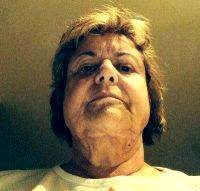
Facelift Neck Jowls
Nevertheless there is some subtle aging that happens every year. It surprises many patients to find out that if the first face lift is performed at a younger age the results last longer.
In some patients that present for their face lift later in life, or have significant looseness/aging of their facial structures, the recurrence of jowls can occur after a few years.
If in those patients the deep structures were corrected at the initial surgery, this moderate jowl recurrence can be corrected with a mini face lift.
Age, genetics, sun exposure, smoking, and nutrition all play a role in the health and elasticity of your skin. The same factors that caused jowls to appear prior to your facelift will continue to work on your tissues after the facelift.
Every plastic surgeon who does facelifts will have some patients in their practice who do not achieve the longevity that they desire after a facelift procedure.
Recurrent Jowling after Facelift
Men and women age differently, but as a rule people with less damaged facial skin (sun exposure and tobacco use) do better following surgery. Once facial skin elasticity is compromised, recurrence of the jowls is inevitable.
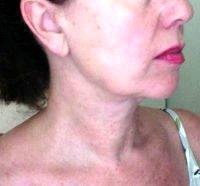
Just A Little Off The Jowls
Age is not the primarily concern for relapse, but proper skincare is. Fluctuations in weight, especially if more than 10% body weight, will loosen both the cheeks/midface and neck.
Unfortunately, there is no way to completely halt the aging process; the jowls wil eventually recur.
The goal with all facial cosmetic procedures is to look and feel natural, refreshed, and younger by setting the clock back a few years. Unfortunately, there is no way to completely halt the aging process.
Even after following a face and neck lift, the signs of facial aging will reoccur. On the average, a face and neck lift should last about 5-10 years. This is dependent upon the surgeon’s skill and technique, your personal genetics (physical characteristics), and skin care maintenance.

Lower Facelift Eliminates Jowls
Gravity, environmental exposure, lifestyle choices, and genetics all play a roll in the longevity of rejuvenative surgery. But it is also important to realize that properly performed, you will always look better for the rest of your life after a neck lift than you would have if no procedures were performed.
The fact that you are starting at a younger age portends better tissue support and elasticity, and better chances for a longer lasting result.

Mini Facelift Jowls After
Maintaining a healthy lifestyle with minimal fluctuation in weight willalso impact the longevity of the procedure.
One excellent option to improve jowls is a procedure known as Ultherapy, which can tighten the neck line and jowls after facelift surgery.
The underlying bony structures of the face play an important role in the success or lack of success of a facelift. Most of the time a facelift should last 7-10 years. Sometimes the surgeon does not recognize the importance of performing a chin implant at the same time as the facelift.

Mini Facelift Jowls Photo Before
The bottom line is that as we age, we actually lose bone in the area just before the jowl and as this happens, the jowl becomes more prominent.
This has to be accounted for in the surgical process and anticipated. When that occurs, the results are more long lasting.
Jowls can recur, the question is when
With the typical sub-SMAS or deep place facelift, jowls should not recur for many years. Results depend on how severe the problem was to begin with and what type of surgery was performed and at what time point.
A face and neck lift will eliminate the jowl and reset the aging clock, so to speak, by a number of years. However, we continue to age and, unfortunately, gravity always wins. With that said, seek and honest, experienced facial plastic surgeon who will give you an accurate idea of the results you can expect and their potential longevity.
The first thing to realize is that a facelift/neck lift “turns back the clock” in terms of the appearance of aging, but it does not “stop time.” The face will continue to age after the procedure, but, if the procedure is done well, the results should last at least 5 years and hopefully 10.
Second, there are almost as many definitions of “facelift” as there are surgeons who perform the procedure. The specifics of the techniques used are of critical importance in determining how long your results will last.
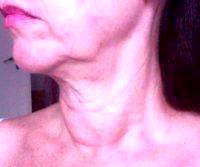
Smas Facelift Jowls
Duration of results may vary person to person. On average, results should last 7-8 years, but outcomes may be better in individuals with excellent skin quality, who are younger, and have stable weight and minimal sun damage.
Results may not be as “tight” or long lasting with older age, genetic predisposition (how do your parents age?), sun exposure, and/or significant weight fluctuations. Surgery provides the most predictable, long term results compared to noninvasive technologies.
The average face lift result should last approximately 10 years. The problem is that in many patients who have a facelift, the jowls are treated incorrectly.
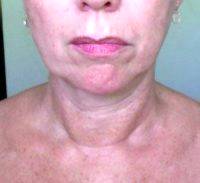
Tightening Of The Neck And Jowls
Expect that just like aging brought them on the first time, aging will bring them on a second time. The second time around you are at a disadvantage, however. A facelift repositions your tissues, but it does not replace them.
The quality of your tissues deteriorates with time so a lifted, jowl free face, is looking that way but with poorer quality tissues than the last time you didn’t have jowls. Do expect to always have less jowling than you would have had if you never had that facelift.
If you were a little crazy you could demonstrate that by only doing a facelift on one side. You would see the jowls come back on the lifted side, but they would still be much better than the other side.
Return of Jowls After Lower Face Lift/Neck Lift
Jowls occur because the cheek tissues have descended with the help of gravity. The actual tissue that descends is called the SMAS (technical name not needed). During a facelift one of the goals is to elevate this tissue back to its more youthful position.
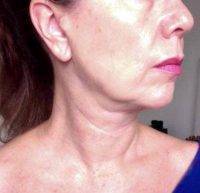
Neck And Jowl Liposuction
I use an extended SMAS elevation technique. This means that this SMAS layer is lifted off of the deeper tissue layers, rotated upward, the excess is removed and the layer is suture closed. Although this technique takes a little more care it really isn’t that much more difficult and the results are better and longer lasting.
A facelift will set the clock back but it does not stop time. In some patients with jowls secondary to heavy fat deposits, I perform micro-liposuction to help prevent a recurrence.
With other patients internal sutures are used to re-suspend the lax tissue, but with time, they do settle again. (Christopher L. Hess, MD, Fairfax Plastic Surgeon)
